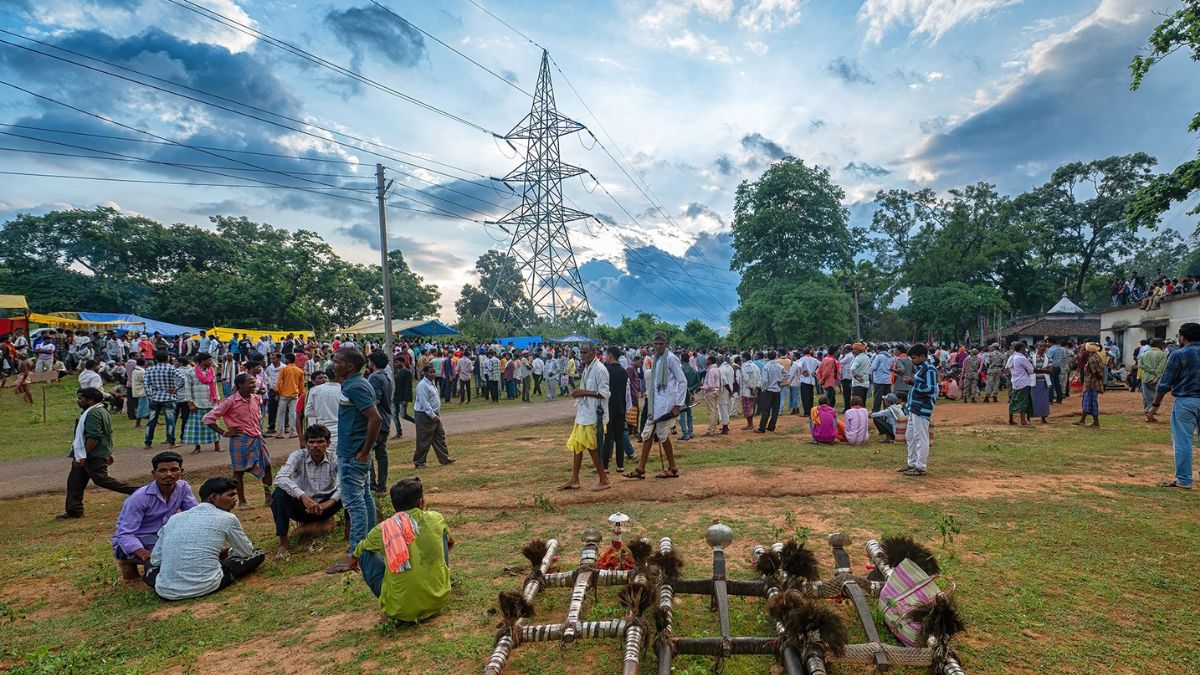Within the coronary heart of Chhattisgarh’s Bastar area, nestled amidst the dense forests and tribal communities, lies a singular custom that has captivated the creativeness for hundreds of years. Right here, within the village of Bhangaram, gods are placed on trial, not by mortal judges however by the villagers themselves. This extraordinary ritual, generally known as the “Bhado Jatra” or “individuals’s court docket,” unfolds yearly, highlighting the intricate relationship between people and deities, a testomony to the colourful cultural heritage of Bastar.
The Divine Courtroom of Bhangaram Devi
The Bhangaram Devi temple serves because the venue for this uncommon court docket, the place the goddess Bhangaram Devi presides over the trials. For 3 days, the temple transforms right into a vibrant hub of exercise, drawing villagers from round 240 surrounding villages to witness this extraordinary spectacle. The villagers current their grievances, starting from failed harvests to persistent diseases, blaming the gods for his or her misfortunes.
The Accused and the Proof
The gods stand accused of failing to uphold their finish of the discount. The villagers imagine that their prayers have gone unanswered, and their pleas for prosperity and wellbeing have fallen on deaf ears. To help their claims, they current proof within the type of dwelling creatures, most frequently hens, who function witnesses on this distinctive court docket.
Divine Justice and Punishment
If the deities are discovered responsible by the villagers, the punishments are extreme. The goddess Bhangaram Devi, who embodies the collective will of the group, points the decision by a village chief, signifying the village’s resolution. The responsible idols, usually wood totems, are exiled from the temple. Some are banished completely, whereas others are allowed to return provided that they fulfill their duties and reply the villagers’ prayers.
Looking for Redemption and Reclaiming Place
Nevertheless, this distinctive court docket system shouldn’t be solely about punishment. It additionally permits for an opportunity at redemption. If the gods rectify their actions, convey rain, or grant prosperity, they’re welcomed again from exile. Their return signifies the villagers’ acknowledgement of the deity’s renewed dedication to their well-being.
Divine Duties and Human Expectations
This trial custom highlights the dynamic and interconnected nature of the connection between people and deities. Villagers acknowledge that their gods additionally bear duties, they usually maintain them accountable for his or her failures. The trials are a manifestation of the idea that gods are usually not omnipotent and are topic to human scrutiny and judgement.
The Function of the Witnesses and the Ledger of Justice
Hens function witnesses within the trial, their presence symbolic of the villagers’ conviction within the want for divine justice. They’re chosen for his or her honesty and ease, guaranteeing that their testimony stays uninfluenced by exterior forces.
Preserving the File of Justice
To make sure that each trial is correctly documented, a meticulous ledger is maintained, capturing particulars about every case. This file contains the variety of gods tried, the costs leveled in opposition to them, and the ultimate judgments delivered. This documentation ensures transparency and permits for the preservation of this distinctive authorized system for future generations.
Enchantment for Forgiveness: A Probability for Restoration
The Bhangaram Devi temple additionally affords a mechanism for attraction. If the exiled gods want to be absolved of their guilt, they have to instantly plead their case to the goddess Bhangaram Devi. Their pleas are judged primarily based on their dedication to fulfilling their duties and restoring their place throughout the group.
The Legacy of Bhangaram Devi and the “Kaana Physician”
The Bhangaram Devi temple’s historical past is interwoven with the legend of “Dr. Khan,” a revered determine who arrived in Bastar alongside Bhangaram Devi. Dr. Khan is credited with serving to the native tribes fight cholera and smallpox outbreaks. He’s honored as “Khan Devta” or “Kaana Physician,” a testomony to his service and compassion, which finally earned him divine standing.
Take Away Factors
The distinctive custom of the Bhangaram Devi temple offers a glimpse into the complicated cultural material of Bastar. It highlights the robust connection between the tribal communities and their deities, a testomony to their respect for divine forces.
- This ritual affords a tangible illustration of the interconnectedness between people and deities.
- It acknowledges the vulnerabilities of the divine, suggesting that gods are usually not infallible and might be held accountable.
- The custom showcases the enduring perception within the energy of collective motion and group possession of their religion.
- The usage of animal witnesses and detailed record-keeping provides one other layer of depth and intrigue to this fascinating apply.
The trials at Bhangaram Devi are usually not mere spiritual ceremonies. They embody a wealthy and evolving system of governance, demonstrating a society’s dedication to holding these in energy, together with divine forces, accountable. This historic ritual continues to be a testomony to the colourful cultural heritage of Bastar and a reminder of the enduring energy of religion within the face of adversity.




